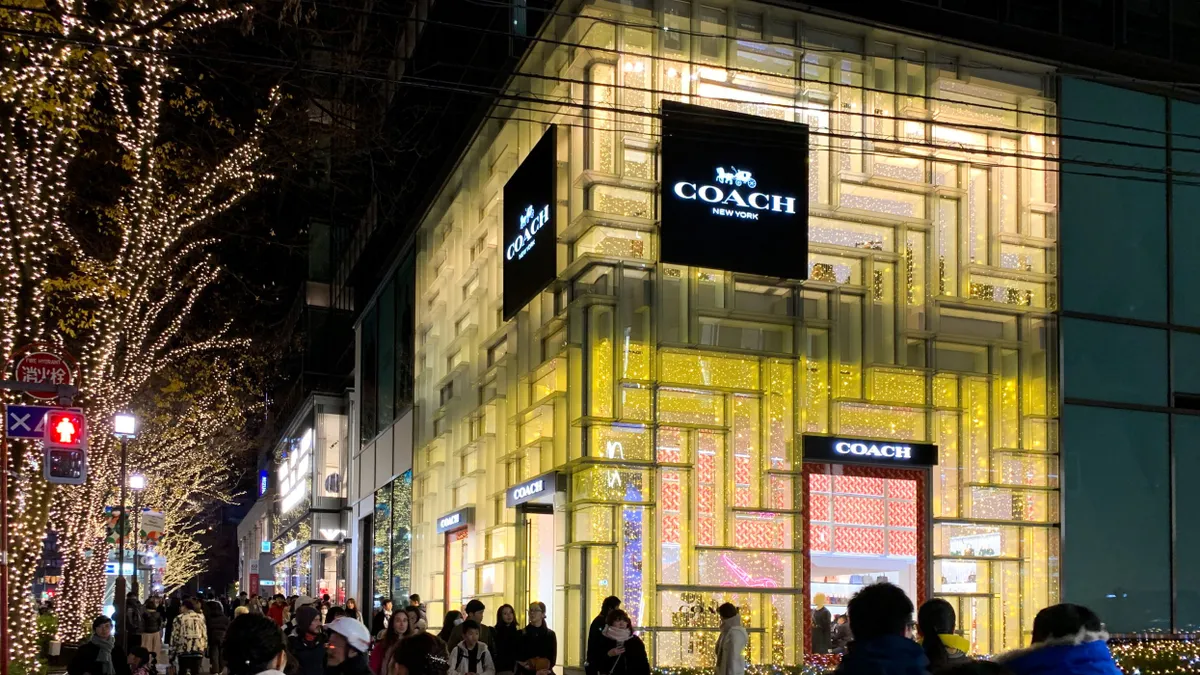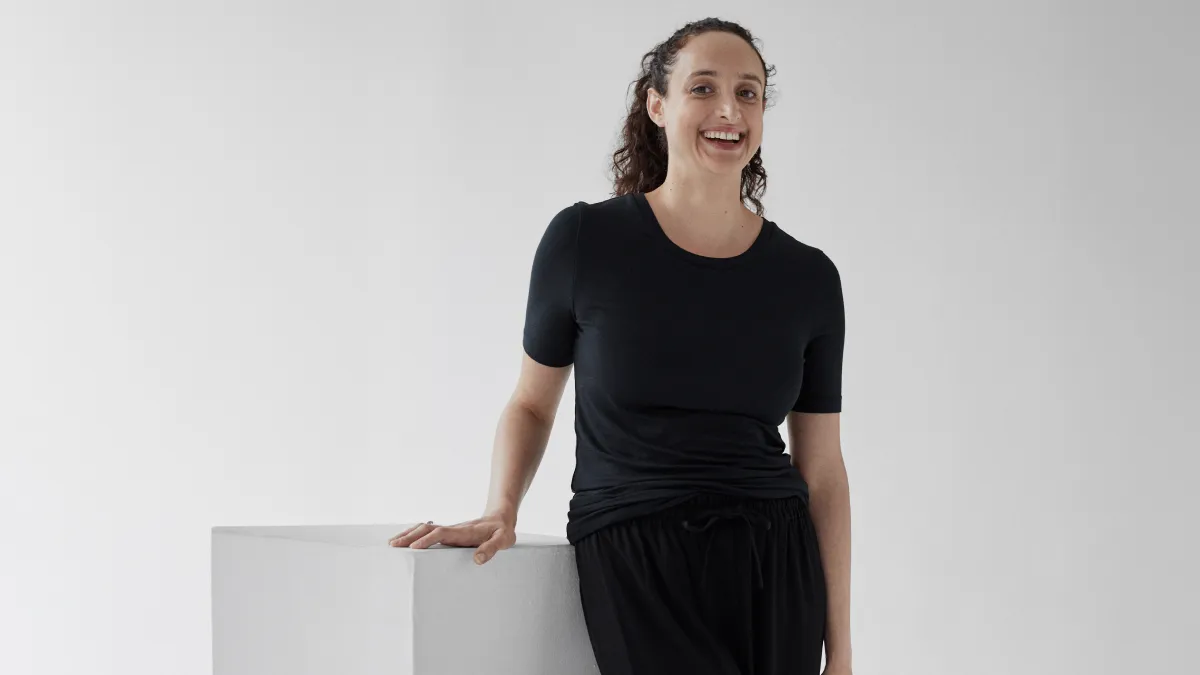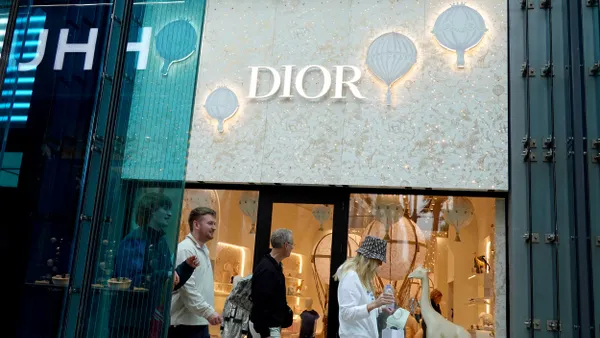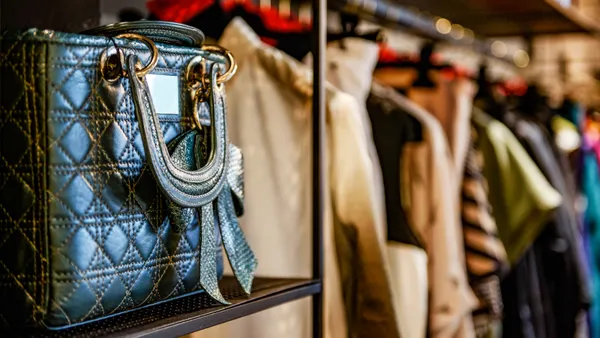Dive Brief:
- Tapestry reported revenue of $2.2 billion for the second quarter of its 2025 fiscal year, marking 5% year-over-year growth, according to a press release Thursday.
- The growth was led by the Coach brand, which saw revenue rise 11%. The luxury conglomerate’s other two brands, Kate Spade and Stuart Weitzman, both saw double-digit declines, by 10% and 15%, respectively.
- The Q2 growth was a record for the company and marked its best performance since 2021, when the company produced double-digit growth due to pandemic spending, according to research from GlobalData.
Dive Insight:
Coach had a strong holiday season. The brand has recently been a point of growth for Tapestry in terms of acquiring new customers, particularly younger ones. In Q2, Tapestry gained 2.7 million new customers in North America, and it said more than half of these were millennials and Generation Z.
Handbags were a key gifting item during the holiday season, and Coach was helped by its premium but not “super expensive” price position, said Neil Saunders, managing director of GlobalData, in emailed comments.
“The brand deserves significant credit for the continued relevance of its collections,” Saunders said. “Items like the Brooklyn bag, which forms part of a wider New York range, are squarely on trend and are of interest to consumers. The range of options and colorways has also, in some cases, helped to push up spend per customer as shoppers are buying more than one variation.”
The Brooklyn bag was named the most popular item in Q4 by shopping platform Lyst, which ranks items based on social media mentions, consumer searches and product views and sales. Another Coach product, its cherry bag charm, ranked fourth by those metrics and made Coach the fifth most popular brand for the period.
The brand’s growing cohort of younger consumers allows it to generate demand for products with marketing strategies focused on self-expression, which helped Coach, Saunders said.
Meanwhile, the Kate Spade brand tells another story.
That brand has seen consistent revenue declines over the last several quarters. Tapestry has been working to boost the value of the brand, in a strategy that included naming new president Eva Erdmann last year. At the time of Erdmann’s hire, the company said she was charged with “accelerating innovation to drive consumer connections” for the brand.
“This is not a new problem, and it reflects the fact that [Kate Spade], while far from terrible, doesn’t have a clear enough point of view and that its offer is too fragmented and isn’t tied together by a coherent story,” Saunders said.
In Q2, Tapestry’s revenue rose across all regions, with the exception of Japan, which saw a 5% drop. Gains were particularly strong in Europe, with a 45% year-over-year increase.
Tapestry raised its full-year revenue outlook on Thursday, now expecting more than $6.85 billion, a 3% growth compared to the prior year. The company previously expected revenue to grow between 1% and 2%.
2024 saw the end of Tapestry’s proposed merger with Capri Holdings in a win for the Federal Trade Commission. In November, Tapestry CEO Joanne Crevoiserat said the company didn’t anticipate pursuing more M&A and would instead focus on its existing business.
Meanwhile, Capri reported quarterly results this week, posting an 11.6% decrease in revenue. The company is working to boost its stable of brands now that a deal with Tapestry is off the table.











